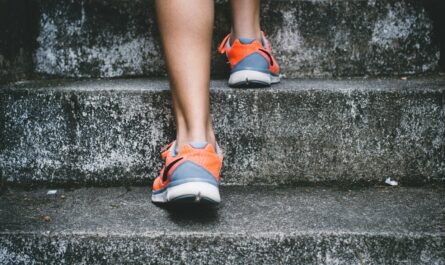In a world increasingly overwhelmed by digital noise, relentless schedules, and the stress of modern life, more people are turning to meditation as a sanctuary for mental peace. But for many, the traditional practice of sitting still in silence doesn’t come naturally. That’s where movement steps in—not just as exercise, but as meditation. From the rhythmic pounding of feet on pavement during a long run to the fluid grace of tai chi or the immersive flow of dance, physical activity can serve as a powerful form of mindfulness that restores mental clarity, emotional balance, and psychological well-being.
Movement as meditation redefines what it means to be present. It unites the body and the mind in motion, offering a route to inner calm that’s both active and deeply therapeutic. While ancient Eastern practices like yoga and martial arts have long embraced this concept, modern psychology and neuroscience are now catching up, proving what many have intuitively known all along—moving the body heals the mind.
The Mind-Body Connection: An Overview
The relationship between the body and mind is not just philosophical; it is deeply physiological. When we move, particularly in ways that are rhythmic and intentional, the brain releases endorphins, dopamine, and serotonin—chemicals that uplift mood and counteract the effects of stress hormones like cortisol. These neurochemical changes lead to feelings of happiness, focus, and emotional regulation.
Movement also activates regions of the brain associated with memory, learning, and emotional processing—including the hippocampus, amygdala, and prefrontal cortex. This neurological engagement doesn’t just enhance cognitive performance; it provides a form of emotional catharsis. In this way, movement transcends the limits of physical fitness and becomes a tool for mental healing.
Why Traditional Meditation Isn’t for Everyone
While the benefits of mindfulness meditation are well-documented, not everyone finds it easy to sit in stillness and focus on the breath. For people dealing with anxiety, ADHD, trauma, or high levels of stress, static meditation can feel frustrating or even triggering. In contrast, movement offers an alternative pathway to mindfulness—one where action facilitates awareness.
For instance, walking meditations in nature allow individuals to anchor themselves in the moment through the sights, sounds, and sensations around them. Likewise, repetitive movements in swimming, rowing, or cycling create a metronomic rhythm that helps the mind settle into a tranquil state.
Movement-Based Practices Around the World
Different cultures have long used movement as a form of meditative healing. These practices reflect a holistic understanding of the human experience, where physical exertion and spiritual presence are interconnected:
- Yoga: Originating in India, yoga unites breath (pranayama), posture (asanas), and mental focus to achieve inner peace.
- Tai Chi and Qigong: Chinese practices that emphasize slow, intentional movement to balance energy (qi) and harmonize the body with the mind.
- Sufi Whirling: A form of active meditation used by the Mevlevi order in Turkey, where repetitive spinning is meant to empty the mind and connect with the divine.
- Indigenous Dance Rituals: Across Africa, the Americas, and Australia, tribal dances have been used as emotional outlets, spiritual ceremonies, and healing tools.
Each of these traditions views movement as sacred, a method for aligning one’s internal state with a higher sense of purpose or peace.
Modern-Day Movement as Meditation
In contemporary settings, we’ve seen a rise in practices that blend physical exertion with meditative awareness. These include:
- Running: Often described as a “moving meditation,” long-distance running helps many people reach a trance-like state where thoughts fade, and clarity emerges.
- Dance Therapy: Encourages emotional expression through free-form movement, helping individuals work through trauma or psychological distress.
- Pilates: While more structured, Pilates emphasizes controlled movement and breath—key tenets of meditative practices.
- Rock Climbing: Requires intense present-moment awareness, focus, and trust in the body—qualities aligned with mindfulness.
These practices demonstrate that intentional movement can be just as meditative as stillness, particularly when attention is given to the sensations of the body and the breath.
The Science Behind Healing Through Movement
Research in neuroscience and psychology continues to affirm the healing power of movement:
- Neuroplasticity: Physical activity promotes the growth of new neural connections, especially in areas related to memory and emotion.
- Trauma Recovery: Studies have shown that movement-based therapies like yoga or EMDR (Eye Movement Desensitization and Reprocessing) help trauma survivors reprocess painful memories stored in the body.
- Depression and Anxiety: Exercise stimulates the production of brain-derived neurotrophic factor (BDNF), a protein that supports neuron health and has antidepressant effects.
- Stress Regulation: Engaging in rhythmic movement reduces sympathetic nervous system dominance and activates the parasympathetic system—our body’s “rest and digest” state.
In essence, movement restores equilibrium, both physically and mentally.
Movement as a Mindfulness Gateway
One of the greatest benefits of movement meditation is its accessibility. You don’t need a cushion, incense, or a silent room. You can practice mindfulness in your daily commute, your evening jog, or even while stretching in your living room. The key lies in intentionality—being fully present with each motion, each breath, and each sensation.
Movement also helps develop the core pillars of mindfulness:
- Awareness: Noticing bodily sensations, tension, or emotional shifts.
- Non-judgment: Accepting the body’s limitations without criticism.
- Presence: Letting go of past regrets or future worries and focusing on the now.
By embracing movement as meditation, individuals who struggle with traditional mindfulness can build a consistent practice that feels natural and sustainable.
Stories of Transformation
Across the world, countless people have used movement to reclaim their lives. Veterans with PTSD have found peace in martial arts. Survivors of abuse have danced their way to emotional release. Athletes dealing with depression have used long-distance training to rediscover purpose.
These aren’t isolated cases—they’re a testament to how movement creates space for healing in ways that language sometimes can’t. The body often holds on to emotions we can’t articulate. Through movement, we allow these emotions to surface, release, and transform.
How to Start Your Own Practice
You don’t need to be a yogi, runner, or professional dancer to use movement as meditation. Here’s how anyone can get started:
- Pick an Activity You Enjoy: Whether it’s walking, swimming, cycling, or dancing—choose something that feels good.
- Start Small: Even 10–15 minutes of mindful movement can have powerful effects.
- Focus on Sensation: Pay attention to how your body feels—the rhythm of your breath, the contact of your feet with the ground, the wind on your skin.
- Breathe Intentionally: Deep, slow breaths signal safety to the nervous system and help anchor your awareness.
- Let Go of Goals: This isn’t about burning calories or breaking records. The aim is presence, not performance.
Combining Stillness and Motion
While movement can serve as meditation, it can also complement seated mindfulness practices. A simple walk before sitting can help calm the mind and prepare the body for stillness. Conversely, following a meditation session with a stretching routine can integrate the stillness into your entire being.
This fusion of motion and stillness reflects the dynamic nature of life—sometimes flowing, sometimes still, always evolving. By embracing both, we create a practice that’s holistic and adaptive.
Conclusion: Move Toward Peace
We often think we need to stop everything to find peace. But what if peace is found not in stillness, but in rhythm? In the stretch of muscle, the beat of feet, the steady rise and fall of breath?
Movement as meditation isn’t just an alternative for those who struggle to sit still—it’s a powerful practice in its own right. It reminds us that healing doesn’t have to be quiet to be real. That sometimes, in order to let go, we need to move through. And that our bodies—far from being obstacles—are often the gateways to inner peace.
One of the most beautiful aspects of using movement as meditation is its simplicity and inclusivity. You don’t need expensive equipment, formal training, or even a quiet environment. Whether it’s five minutes of conscious walking around your block or a daily yoga session in your room, the act of moving with presence becomes a sacred ritual of reconnection—with your breath, your body, and your mind.
For those living with mental health challenges, chronic stress, or emotional numbness, movement can be the bridge back to awareness. When sitting meditation feels inaccessible, movement offers an invitation to reconnect—starting not in the mind, but in the body. Each deliberate step or stretch becomes a declaration that healing is not only possible, but already in motion.
In a culture that often glorifies productivity and mental overload, moving with intention offers a radical act of self-care. It teaches us to listen inwardly, to slow down, and to value presence over progress. When our internal world feels chaotic, returning to the rhythm of movement can restore clarity. The body becomes our compass, guiding us back to center.
Movement meditation also empowers us to rewrite narratives about our bodies. Rather than seeing movement as a punishment for eating or a way to achieve a physical ideal, we begin to see it as a form of nourishment—one that fuels mental clarity and emotional resilience. This shift is transformative, especially for those recovering from body image struggles, disordered eating, or perfectionism.
Ultimately, when we move with awareness, we embody the very essence of meditation. We realize that mindfulness isn’t limited to stillness—it flows through motion, pulses in breath, and echoes in the quiet power of presence. In this way, every step, stretch, and sway becomes more than exercise—it becomes a path to healing, a dance of liberation, and a journey back to the self.
So the next time you lace up your shoes or roll out your mat, do it not just for your body, but for your mind. Step, stretch, dance, or sway your way into the present. Because every movement is a message: I am here. I am alive. I am healing.



